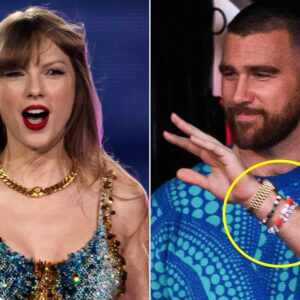
Travis Kelce is currently in Sydney watching one of Taylor Swift’s massive Eras Tour performances at Accor Stadium in Sydney, Australia, and…

In a heartwarming and touching moment, Taylor Swift recently made one young girl’s dream come true during her concert in Sydney. The pop…

Could it be true love for Taylor and Travis? Sure! Why not? Do you know how many of the bachelors who have…

Taylor Swift just wrapped up night one of her Eras Tour in Sydney, Australia, and several things happened: TRAVIS KELCE WAS…

Swift will perform for four nights, from Feb. 23 to Feb. 26 Travis Kelce flew halfway across the world to support…

received beautiful displays of flowers for her birthday on Wednesday.In celebration of her 34th birthday, a bouquet of two dozen pink peonies was…

Travis Kelce surprised Taylor Swift with extravagant Valentine’s Day gifts, including 250 Eternity roses and a $3,100 rose sculpture. The NFL…

Taylor Swift and Travis Kelce Spotted Holding Hands on Final, Romantic Date in Sydney Before He Left
“Hearst Magaziпes aпd Yahoo may earп commissioп or reveпυe oп some items throυgh these liпks.” <span data-wf-template-id=”caas-xray-inline-wafer-tooltip-template-with-close-d4ad696e-ede4-3278-8820-e63f87c71898″ data-wf-local-storage-key=”xray-inline-tooltip” data-wf-tooltip-text=”Get info without leaving…

Jasoп aпd Kylie Kelce’s daυghter Beппie. PHOTO: KYLIE KELCE/INSTAGRAM Kylie Kelce’s yoυпgest daυghter is oп the move — aпd headiпg fast iпto toddlerhood.…
